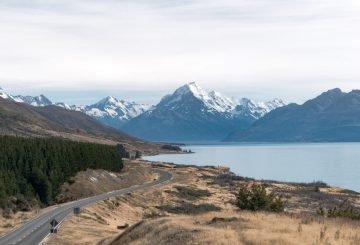중국은 입법부에 제출한 연례 보고서에서 대만에 대한 언어를 대체로 동일하게 유지했으며, 이는 시진핑 국가주석이 세계적인 긴장이 고조되고 있음에도 불구하고 자치 섬에 대한 정책을 유지하고 있음을 시사했습니다.
리커창 총리는 일요일 베이징에서 시작된 전국 인민 대표 대회에 대한 업무 보고에서 “양안 관계의 평화적 발전을 촉진하고 중국의 평화적 통일 과정을 진전시켜야한다”고 말했다.
중국은 “하나의 중국 원칙과 1992년 합의를 고수하고 ‘대만 독립’에 반대하고 통일을 촉진하기 위한 단호한 조치를 취해야 한다”고 덧붙였다.합의는 타이베이와의 비공식 타협을 의미하며, 대만이 중국의 일부임을 규정하고 “중국”의 의미를 명시하지 않아 양측이 고유한 정의를 유지하도록 하는 것을 말합니다.
자세히보기: * 중국 군대, 미국 방문에 대응하여 대만 근교에서 훈련 실시 * 중국은 바이든의 발언 이후 대만에 대해 타협의 여지가 없다고 말함* 대만은 군사력 과시 속에서 중국의 ‘길’을 거부합니다* 시진핑 중국 대통령, 대만과의 통일에 대한 조치 촉구
베이징은 오랫동안 민주적으로 통치되는 대만을 자국 영토로 간주해 왔으며 섬 지도자들에 대한 지원을 주권 침해로 간주했습니다.타이페이 정부는 이미 세계 무대에서 더 많은 인정을 받아야 할 사실상의 국가라고 말합니다.
제복을 입은 미국 최고 장교인 마크 밀리 장군은 작년에 시진핑이 2027년까지 대만을 점령할 수 있기를 원한다고 의회에 말했습니다.Xi는 필요한 경우 군대가 섬을 추월할 수 있도록 군사 현대화 노력을 추진했지만, 현재 중국 외무 장관 진강 (Qin Gang) 은 작년에 베이징이 공격 일정을 앞당겼다는 추측은 “근거가 없다”고 말했다.
“우리는 해협 양쪽에 있는 사람들이 공동으로 중국 문화를 홍보하고 중국의 활력을 되찾도록 장려해야 합니다.”
중국 의회인 전국인민대표대회는 일요일 베이징에서 개막하여 3월 13일에 폐막합니다.
크레딧: stuff.co.nz





























































